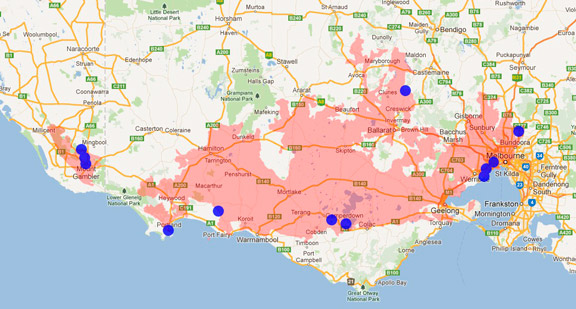A range of teacher professional learning programs will be developed to accompany the Biodiversity of the Western Volcanic Plains online outreach...

White-lipped Snake
Drysdalia coronoides
Active day and night. Viviparous (live young). Produces 3 to 10 live young in late summer. Stays in areas of heavy cover unless basking.
| Details | Description |
| Type | Reptile |
| Group | Snake |
| Identifying Characteristics | |
| Distinctive Markings | White stripe along the upper lip. |
| Diet | Carnivore. Small lizards, lizard eggs and frogs. |
| Habitat | Forested areas of southern Victoria usually in wetter habitats. One of the few snakes in Australia to survive high altitudes and southern latitudes, being cold-adapted. |
| Native Status | Native to Australia |
| Taxonomy | |
| Phylum | Chordata |
| Class | Reptilia |
| Order | Squamata |
| Family | Elapidae |
| Genus | Drysdalia |
| Species | coronoides |

Distribution maps indicate current and historic locations where species have been sighted.
Source: Atlas of Living Australia
| Conservation Status | |
| DEPI Advisory List | Not listed |
| FFG Act | Not listed |
| EPBC Act | Not listed |
The conservation status of species is listed within Victoria and Australia.
The Department of Environment and Primary Industry (DEPI) Advisory List consists of non-statutory advisory lists of rare or threatened flora and fauna within Victoria.
The Flora and Fauna Guarantee Act 1988 (FFG Act) lists threatened species in Victoria. Under the Act, an Action Statement is produced for each listed species.
The Environment Protection and Biodiversity Conservation Act 1999 (EPBC Act) is the Australian Government’s key piece of environmental legislation, listing nationally threatened native species and ecological communities.



